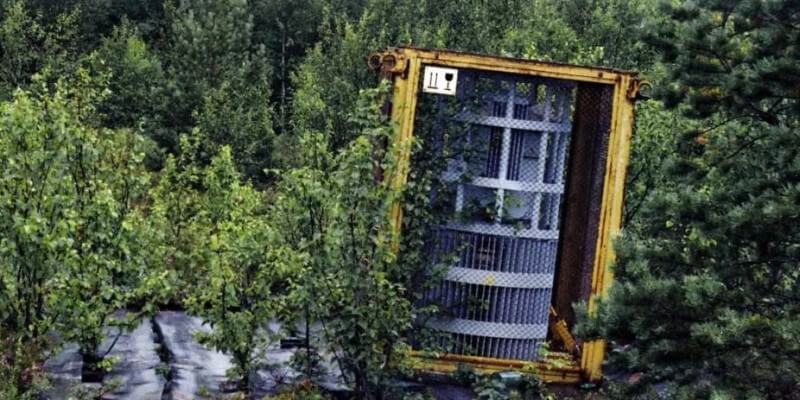
Argon’s Steven Pike considers the history and legacy of the Soviet Union’s search for remote energy supply.
The Problem of Power
In the 2015 film The Martian, stranded astronaut Mark Watney carefully recovers the Radiological Thermoelectric Generator (RTG) that was used to power his spacecraft to the Red Planet, which he now needs to assist his escape. Upon landing on Mars, due its radioactive emissions, the RTG had been buried deep in the Martian soil. There was a reason for this caution: RTGs are extremely dangerous, something that has been understood since they were developed in the 1950s. Despite this knowledge, thousands of miles of remote frozen Arctic coastline created an engineering problem in the Soviet Union. This coastline needed lighthouses and radio towers all of which required electrical power to operate. The cold and remoteness of these locations made it impractical for human operators to be present, and there was no infrastructure for a reliable, sustainable power source
Enter the RTG (or Radiological Thermoelectric Generator)
The Soviet dilemma seemed to be solved with the widespread deployment of small RTGs, which could operate for years, providing a cheap reliable power source able to meet operational requirements of remoted locations. The decision to use RTGs was made mostly pre-Chernobyl, and confidence in the ability of scientists and engineers to control this technology was taken for granted. Humanity had mastered the atom, and its application in creating cheap, never-ending energy seemed limitless. So ideal did this technology appear that, over the course of two decades, the Soviet Union scattered over 2,500 Beta-M RTGs across Russia and its satellite states. While the Soviet Union was not alone in using RTGs, NASA in the United States quickly restricted the use of RTGs to fuelling its deep space probes, which were designed to be used well away from human civilisation.
So What is an RTG?
RTGs are not nuclear reactors, nor do they operate like nuclear batteries. Instead, they convert the heat from radioactive decay into electricity. While the Americans used the expensively produced plutonium-238, Soviet engineers opted for much cheaper strontium-90, or equally cheap Caesium-137 or Cerium-144. These three isotopes share one thing in common: they’re all waste products from spent nuclear fission. The ionising source heats an arrangement of metal fins, as the fins cool, a semiconductor converts that energy into electricity. Unfortunately, the most common forms of RTGs were not built to exacting standards.
Usually encased in a rough, metal fabricated frame, RTGs measure about 1.5 metres wide and 1.5 metres tall and typically weigh approximately one metric ton. These units provide a steady output voltage of 7 to 30 volts and a power capacity of up to 80 watts—sufficient for their purpose but not substantial. Generally, RTGs have a working life of 10 to 20 years.
At the time, it was considered a simple energy solution, and given these units were designed for deployment in uninhabited area, the risk was deemed ‘acceptable’ by Soviet standards. They were even laid on the surface or attached to the exteriors of remote buildings without any environmental or security protections.
What Went Wrong with RTG Deployment?
While the deployed units probably initially received inspection and maintenance, the collapse of the Soviet Union in 1991 meant that the entire RTG inventory fell quickly out of maintenance and into disrepair. With no funds to maintain the hard-to-reach RTGs, they became victims of neglect and metal thieves. The rusting devices, most exposed to extreme weather conditions, began to fail and leak radiation. This situation was further complicated by the organisational and administrative turmoil engulfing Russia, causing responsible authorities to lose track of many of these devices.
A small fission source having a meltdown in the remote wilderness may not be considered a huge problem unless humans make contact with that source. This is of course what began to happen. In a freezing Georgian forest in 2002, three woodsman stumbled upon a mysterious metal cylinder that emitted a welcome, albeit deadly, warmth, melting all the nearby snow. Not only did the object make for a more comfortable night, but it also offered the prospect of reclaiming significant scrap metal value from the unknown machinery. The warmth was so appealing that one of the woodsmen slept with his back against the metal exterior. All three men would begin to experience agonising burns, one would die, and the others would spend months in hospitals across Europe undergoing treatment for radiation injuries that refused to heal.
The International Atomic Energy Agency (IAEA) hastily arranged for recovery training for the ill-equipped Georgian authorities, and the incident served to raise international awareness and concern. International funding and cooperation was put in place to assist Russia and their former satellite states locate and dispose of abandoned RTGs and over a thousand RTGs were identified and disposed of. But the invasion of Crimea in 2014 by Russia forces meant cooperation with U.S and EU programmes by Russia began to seriously falter.
What is the Current Situation?
It is believed that over a thousand RTGs remain, either uninspected, lost to the elements, or orphaned into the wilderness. Even in these remote locations, they pose an unexpected hazard to woodsmen, deer hunters, thieves, or simply villagers who stumble upon them without realising the danger. There are plenty of recorded examples of mishandling these lethal devices, either due to human error by the Russian authorities or the ignorance of scrappers and locals. Presumably, there are many tragic incidents that have gone unrecorded.
Conclusion
The presence of these dangerous radioactive sources emphasises the need for authorities to be prepared to respond rapidly with detection, recovery, and medical teams to isolate and remove RTGs. The fact that these devices are mostly located in states with rudimentary radiation response capabilities means that international assistance is almost certainly required. As time passes, the likelihood of international teams putting their training, preparedness, and equipment to the test against this radiological threat is increasingly a case not of if, but when.
Featured image source: Bellona







